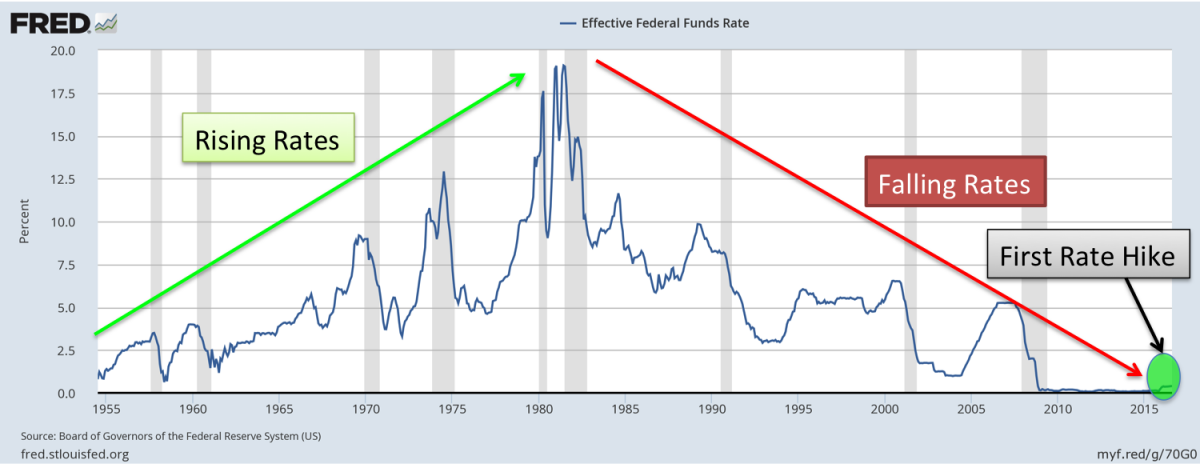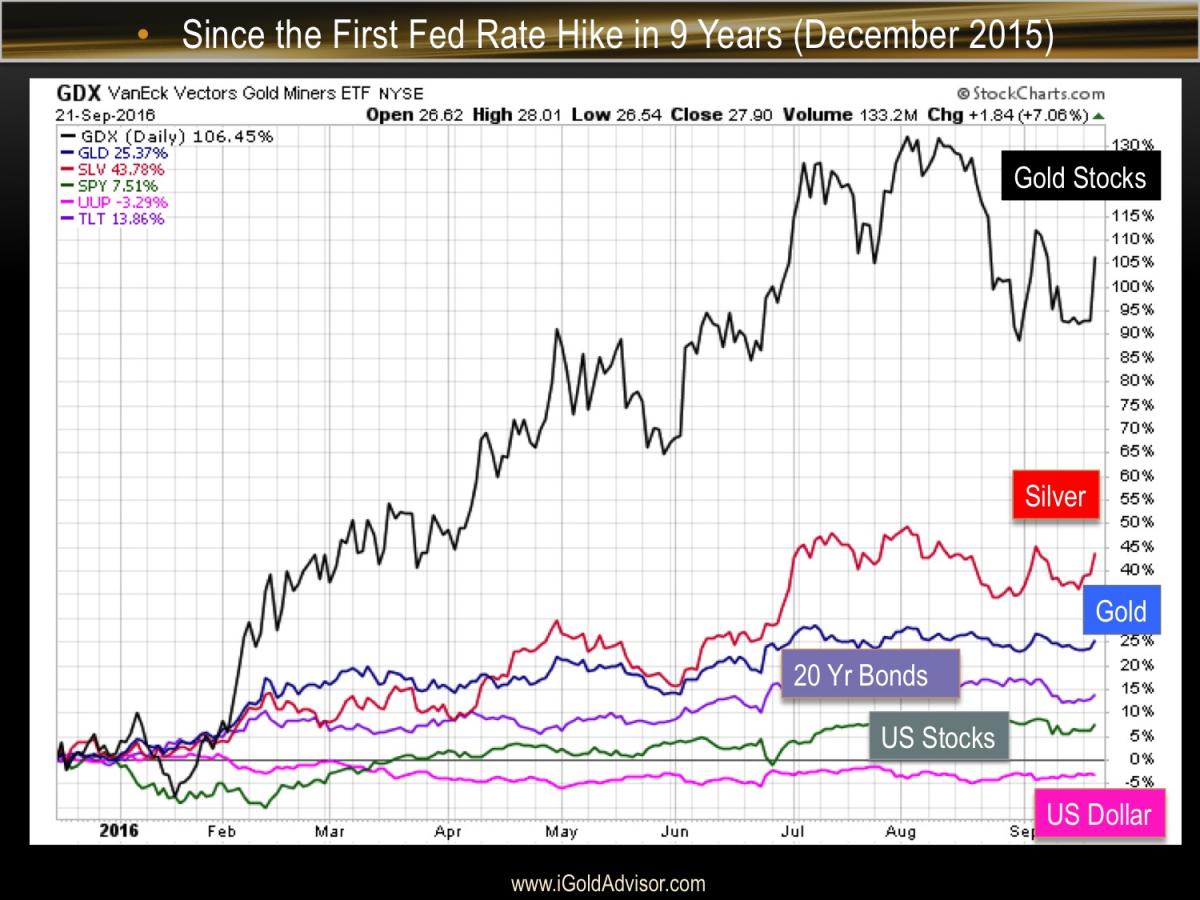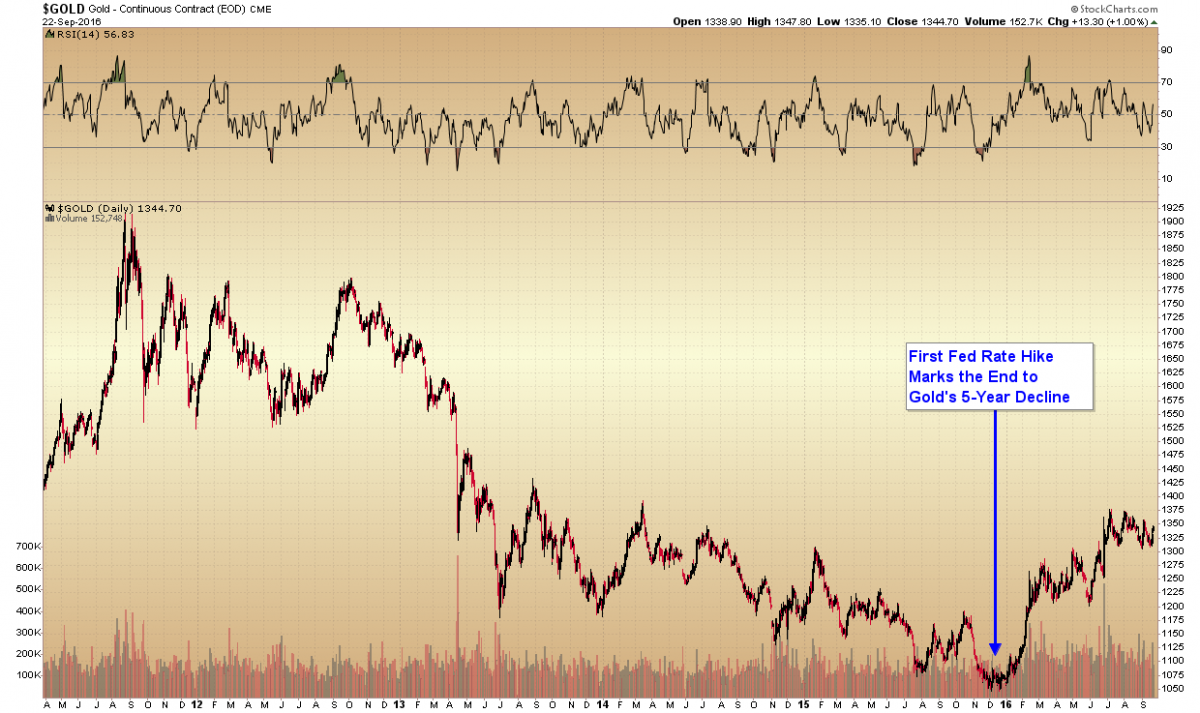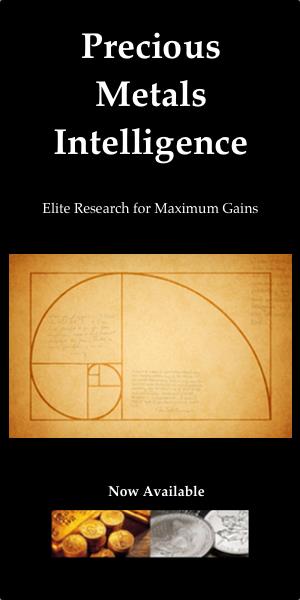Precious Metals Are Top Performers Since The First Rate Hike
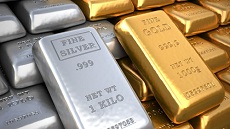
On Wednesday September 21, the Federal Reserve released its latest decision on interest rate policy in the United States. The committee left its target rate unchanged at 0.25% - 0.50%, a range which has been in effect since December 2015.
The most notable section of the statement issued at the Fed press conference was, however, not related to the lack of change in interest rates, but rather to the Fed's expectations for the future. To quote the statement: "The case for an increase in the federal funds rate has strengthened."
This language is in stark contrast to the words the Fed has used at previous policy meetings this year, which have generally not mentioned such hints for rate hikes pending. The Fed is clearly bracing the markets for a second rate hike, most likely at the December meeting, which would set a range for short-term interest rates between 0.50% - 0.75%.
A Brief History Of Fed Interest Rates
For perspective, let us rewind and view the history of Fed-controlled interest rates since the post-World War II era.
We must recall that Fed-controlled interest rates have been held below 0.5% for nine years now and counting. This is the lowest on record, lower even than rates during World War II, which were held at 1% for the bulk of the war.
The suppression of short-term interest rates is inherently inflationary. The Fed does not simply have a lever it pulls to lower rates at will. It must instead do so through "open market" operations, which means the Fed buys the entire short-end of the bond curve to an extent that bond yields are forced lower than their natural market levels. The money to buy these bonds is printed by the Fed -- or in the modern era created electronically -- and thus the lowering of interest rates directly results in an increase in the money supply.
An increase in the money supply is what causes prices to rise for goods and services.
Note that the first interest rate hike in nine years is shown at the lower right of the chart. When viewed with this perspective, it is apparent how much further rates may still need to rise in order to once again reach some level of historical normalcy.
How Did The First Rate Hike Affect Precious Metals?
There was much fear in the precious metals community as rumors began circulating last fall that the Fed was to implement its first rate hike in December 2015. The theory was that should the Fed raise interest rates, it would decrease the attractiveness of gold, as investors could earn higher rates of return in bonds or short-term savings accounts. Gold, as it was claimed, paid no interest, and thus would fall in value when interest rates were hiked.
Given the strength of the language used at the most recent Fed meeting hinting at a second pending interest rate hike, there is once again a sense of fear in the precious metals market. Many feel that if the Fed is set to embark on a series of rate hikes, this must surely be negative for gold and silver.
Yet the actual data completely negates this theory.
Let us examine the action in several broad asset classes since the first Federal Reserve rate hike last December. Which assets have performed best?
It is clear that precious metals have been the best performers since this first interest rate hike.
Indeed, since last December, the single best-performing sector in the entire US economy has been the precious metals mining sector, followed, of course, by the prices of their primary products: silver and gold bullion.
Furthermore, it is no coincidence that gold saw its absolute low for the 2011-2015 decline at $1,045 per ounce -- nearly to the day of this first rate hike.
Why Does Gold Rise With Rising Interest Rates?
In order for this phenomenon to make sense, we must take a different perspective of the Federal Reserve. The central bank is a reactive organization, not a proactive one. The Fed ingests incoming data related to employment and pricing, and then responds with one of its monetary tools.
The Fed does not have a crystal ball. Being reactive, can we deduce when the Fed would logically decide to raise interest rates? Only when it is forced to do so. The Fed raises interest rates only when the effects of its previous money-printing cycle are starting to show up in the broader economy in the form of rising prices.
Gold is the ultimate protection from inflation, and this is why it rises concurrently with interest rates. Just like a thermometer, gold rises to signal that inflation is in the process of heating up.
What Is To Come For Gold?
Refer once again to the first chart of this article. Recall that short-term interest rates tend to move through generational cycles, and that after falling from 1980 - 2015, rates have now begun to tick upward again. Yet clearly, rates are nowhere near a high, as at 0.25% - 0.50%, there is still massive room for rates to rise to reach a mean of 2.0% - 4.0%, let alone a previous peak as in 19% in 1980.
Although the Fed is moving slower than in any previous rate-hike cycle, the trend has clearly started toward higher rates. Precious metals have been the best performing asset class since the initial hike - the first in nine years. And if the long-term correlation follows what we have seen over the last year, precious metals should have a bright future well into the next decade.
********
Free Gold-Eagle Newsletter!
- Fresh weekly insights on gold, precious metals, and the economy
- Leading authors from around the world
- Always free
- Stay informed!

